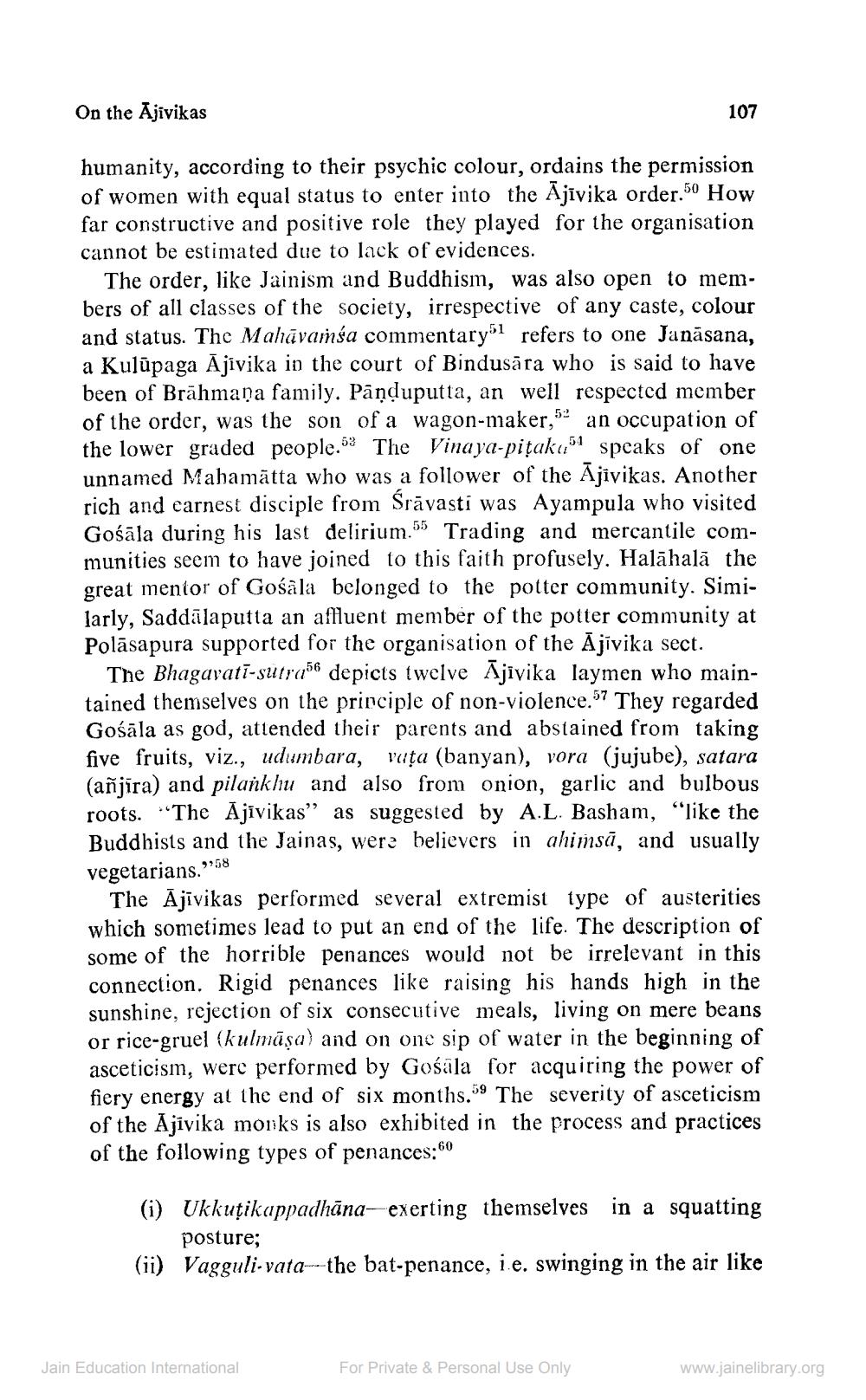________________
On the Ajivikas
humanity, according to their psychic colour, ordains the permission of women with equal status to enter into the Ajivika order.50 How far constructive and positive role they played for the organisation cannot be estimated due to lack of evidences.
52
54
The order, like Jainism and Buddhism, was also open to members of all classes of the society, irrespective of any caste, colour and status. The Mahāvamsa commentary refers to one Janasana, a Kulūpaga Ajivika in the court of Bindusara who is said to have been of Brāhmaṇa family. Paṇḍuputta, an well respected member of the order, was the son of a wagon-maker, an occupation of the lower graded people. The Vinaya-piṭaka speaks of one unnamed Mahamatta who was a follower of the Ajivikas. Another rich and earnest disciple from Śrāvasti was Ayampula who visited Gośāla during his last delirium.55 Trading and mercantile communities seem to have joined to this faith profusely. Halāhala the great mentor of Gośala belonged to the potter community. Similarly, Saddalaputta an affluent member of the potter community at Polasapura supported for the organisation of the Ājīvika sect.
The Bhagavati-sutra depicts twelve Ajivika laymen who maintained themselves on the principle of non-violence.57 They regarded Gośāla as god, attended their parents and abstained from taking five fruits, viz., udumbara, vața (banyan), vora (jujube), satara (añjira) and pilankhu and also from onion, garlic and bulbous roots. The Ajivikas" as suggested by A.L. Basham, "like the Buddhists and the Jainas, were believers in ahimsā, and usually vegetarians."58
107
The Ajivikas performed several extremist type of austerities which sometimes lead to put an end of the life. The description of some of the horrible penances would not be irrelevant in this connection. Rigid penances like raising his hands high in the sunshine, rejection of six consecutive meals, living on mere beans or rice-gruel (kulmāṣa) and on one sip of water in the beginning of asceticism, were performed by Gośāla for acquiring the power of fiery energy at the end of six months.59 The severity of asceticism of the Ajivika monks is also exhibited in the process and practices of the following types of penances:60
(i) Ukkuțikappadhana-exerting themselves in a squatting
posture;
(ii) Vagguli-vata-the bat-penance, i.e. swinging in the air like
Jain Education International
For Private & Personal Use Only
www.jainelibrary.org




